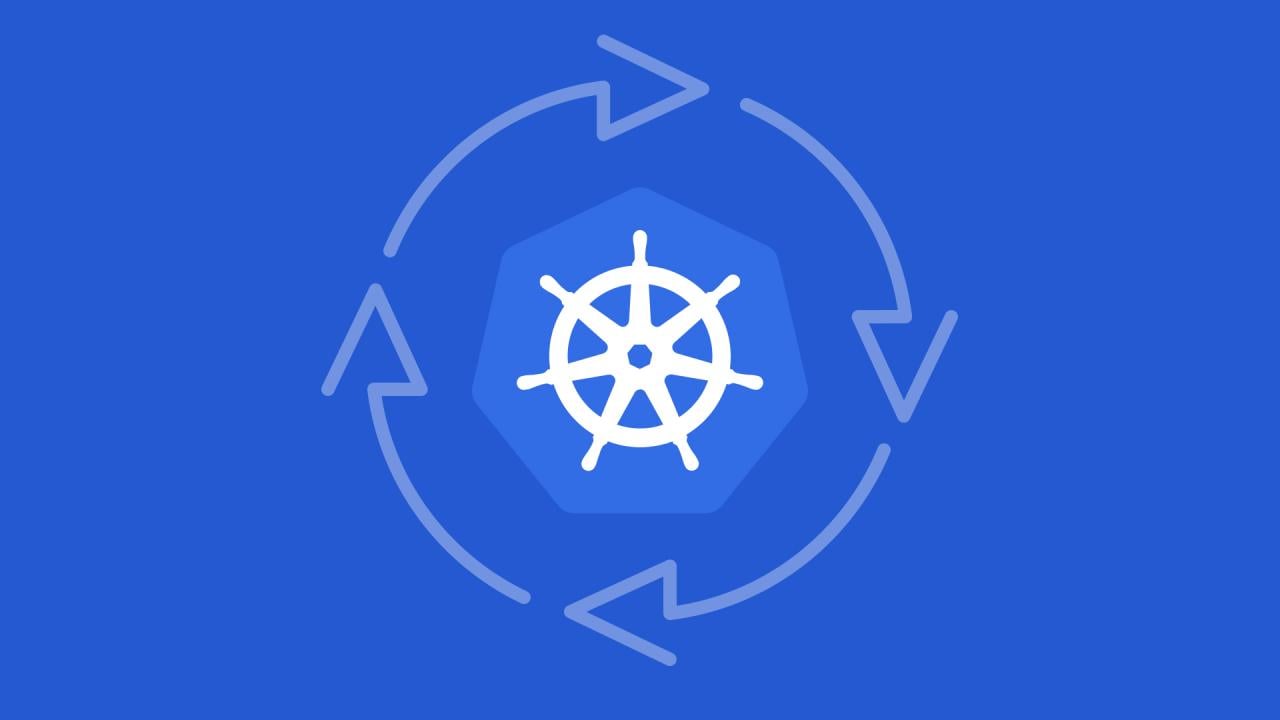The shift to cloud computing has been a monumental change for modern businesses, but the journey didn’t stop at simply migrating to the cloud. The need to manage and orchestrate the complexity of modern applications, built from a collection of small, independent services, led to a new era of technology. At the heart of this era is Kubernetes, an open-source platform that has become the de facto standard for container orchestration. Its rise has been so profound that it’s often referred to as the cloud’s dominant operating system. This article will provide a comprehensive deep dive into the world of Kubernetes. We’ll explore its core principles, the key drivers behind its explosive growth, and the strategic implications for businesses and developers. We will also delve into critical areas such as its role in a multi-cloud strategy, the new challenges of security and governance, and the future of application management, offering a roadmap for organizations looking to successfully navigate this transformative technology.
The Foundational Principles of Kubernetes

Kubernetes, often abbreviated as K8s, is an open-source container orchestration system that automates the deployment, scaling, and management of containerized applications. It’s a platform that is built on a few key principles that make it a game-changer for modern application development.
A. The Container Revolution: To understand Kubernetes, you must first understand the container revolution. A container, such as Docker, is a lightweight, standalone, executable package of software that includes everything needed to run it, including the code, a runtime, and system libraries.
- Portability and Consistency: Containers solve the “it works on my machine” problem. They provide a consistent environment for an application to run, regardless of where it is deployed, from a developer’s laptop to a production cloud server. This portability is a game-changer for a multi-cloud or a hybrid cloud strategy.
- Efficiency and Resource Utilization: Containers are far more efficient than a traditional virtual machine. They allow a developer to run multiple, independent applications on a single server, which can lead to a massive improvement in resource utilization and cost savings.
B. Automation and Orchestration: At its core, Kubernetes is an automation and orchestration platform. It automates the most complex and time-consuming tasks of managing a containerized application.
- Automated Deployment: A developer can, for example, use Kubernetes to automate the deployment of a new version of their application. Kubernetes can automatically deploy the new version to a subset of servers, monitor its performance, and then roll it out to the rest of the servers if it is stable. If the new version has a bug, Kubernetes can automatically roll it back to the previous version.
- Self-Healing and Resilience: Kubernetes is a self-healing system. If a server or a container fails, Kubernetes can automatically detect the failure and can automatically replace the failed container with a new one. This self-healing capability is a game-changer for an application’s resilience and reliability.
C. Declarative Configuration: Kubernetes is a declarative platform. This means that a developer can define the desired state of their application, and Kubernetes will automatically make it happen.
- The “Desired State” Model: For example, a developer can tell Kubernetes that they want to run five instances of their application. Kubernetes will then automatically ensure that five instances of the application are always running. If one of the instances fails, Kubernetes will automatically replace it with a new one. This “desired state” model is a new and powerful way of managing a complex application.
- Infrastructure as Code (IaC): This declarative model is a perfect fit for a methodology known as Infrastructure as Code (IaC), where a developer manages and provisions their IT infrastructure through code. A developer can write a Kubernetes manifest file that defines an entire application, and this file can be stored in a shared repository, where it can be versioned, reviewed, and deployed.
D. Service Discovery and Load Balancing: Kubernetes provides built-in service discovery and load balancing.
- Service Discovery: In a microservices architecture, a service needs a way to find another service. Kubernetes’s service discovery system automatically registers and manages all the different services in an application, allowing them to find each other without the need for a manual configuration.
- Load Balancing: Kubernetes also provides built-in load balancing. It can automatically distribute a user’s traffic to the different instances of an application, ensuring that the application is always running at its optimal performance.
The Strategic Imperatives of Kubernetes

The rise of Kubernetes is not just about a new technology; it is a strategic imperative that can lead to a significant competitive advantage. Businesses that fail to adapt will be left behind in a new, agile, and automated digital world.
A. Accelerating Innovation and Time to Market: In a digital economy, the speed of innovation is a key competitive advantage. Kubernetes allows a company to build and deploy a new feature or a new application in a matter of hours or days, not weeks or months. This faster time to market is a game-changer for businesses that are trying to stay ahead of their competitors.
B. Enhancing Resilience and Reliability: Kubernetes is a self-healing and highly resilient system. The microservices architecture, for example, ensures that a single point of failure doesn’t take down the entire system. This enhanced resilience is a major factor for businesses that have mission-critical applications.
C. Unlocking Multi-Cloud and Hybrid Cloud: The portability of a container and the orchestration of Kubernetes are a game-changer for a multi-cloud or a hybrid cloud strategy.
- Mitigating Vendor Lock-In: Kubernetes is an open-source platform, which is not tied to a single cloud provider. This gives a business the flexibility to move its workloads between different providers, mitigating the risk of vendor lock-in.
- A Consistent Operational Model: Kubernetes provides a consistent operational model for managing workloads across a variety of different environments, from a public cloud to a private data center. This is a significant advantage for a business that is trying to manage the complexity of a multi-cloud or a hybrid cloud environment.
D. Cost Efficiency and Scalability: The container revolution and the orchestration of Kubernetes can lead to a significant cost savings.
- Improved Resource Utilization: Containers are far more efficient than a traditional virtual machine, and Kubernetes can automatically scale an application up or down to meet demand. This can lead to a massive improvement in resource utilization and a significant cost savings.
- The “Pay-as-You-Go” Model: The cloud’s pay-as-you-go model and the efficiency of containers and Kubernetes can lead to a more cost-effective cloud environment. This is a major factor for businesses of all sizes, from a small startup to a large enterprise.
The New Challenges of Kubernetes
While Kubernetes offers a host of benefits, it also introduces a new set of challenges that businesses must be prepared to address.
A. Complexity and a Learning Curve: The Kubernetes ecosystem is complex. The number of different technologies, tools, and best practices can be overwhelming for a developer or a business that is just starting out. This complexity can lead to a steep learning curve and a significant upfront investment in training and education.
B. Security and Governance: Security in a Kubernetes world is a new and complex beast.
- The New Threat Landscape: The attack surface of a Kubernetes cluster is different from that of a traditional application. The threats are not just to the operating system or the network but to the individual containers, the APIs, and the configuration of the cluster itself.
- Misconfiguration Risk: A simple misconfiguration of a Kubernetes policy can open a digital door for an attacker. The “shared responsibility” model, which holds that the cloud provider is responsible for the security of the cloud, but the user is responsible for the security in the cloud, is a critical legal and strategic consideration.
C. Data Management and Statefulness: Kubernetes was originally designed for stateless applications. The management of stateful applications, such as a database, is a new and complex challenge.
- Storage and Persistence: The storage and persistence of data in a Kubernetes cluster is a major challenge. Kubernetes provides a number of tools for this, but it requires a deep understanding of the technology and the best practices.
- Data Portability: The portability of a container does not mean the portability of a database. Moving a large, stateful database between different cloud providers or on-premises is a major challenge.
D. The Cultural Shift to DevOps: The Kubernetes revolution is fundamentally a cultural shift.
- Breaking Down Silos: The traditional silos between development and operations teams are being broken down by a new philosophy of a shared sense of ownership and responsibility.
- The “You Build It, You Run It” Philosophy: The “you build it, you run it” philosophy holds that a developer is responsible for the performance and reliability of their code in production. This creates a powerful incentive for a developer to write high-quality, reliable code.
The Strategic Roadmap for Kubernetes Adoption
Successfully navigating the Kubernetes world is not a one-time project; it is a strategic roadmap that requires a commitment to continuous learning and a cultural shift.
A. Start Small and Learn: The best approach to Kubernetes adoption is to start small and learn. Begin with a single, non-critical application and use it as a learning opportunity. This will allow you to get a feel for the technology, the tools, and the best practices without the risk of a major failure.
B. Invest in Training and Education: The complexity of the Kubernetes world requires a significant investment in training and education.
- Certifications: A number of new certifications, such as the Certified Kubernetes Administrator (CKA), are emerging to help developers and IT professionals get the skills they need.
- Learning Platforms: The major cloud providers, as well as a number of third-party vendors, offer a variety of online courses and training platforms.
C. Embrace a DevOps Culture: The Kubernetes movement is fundamentally a cultural shift. A company must embrace a DevOps culture, with its focus on collaboration, automation, and a shared sense of ownership.
- CI/CD Pipeline: The first step is to build a CI/CD pipeline, which is an automated process that allows a developer to write code, test it, and deploy it to production in a matter of minutes.
- Cross-Functional Teams: The most successful companies are those that have cross-functional teams that include developers, operations engineers, and security experts.
D. Choose a Cloud-Agnostic Strategy: The future of the cloud is a multi-cloud and a hybrid cloud one.
- Containers and Kubernetes: The use of containers and Kubernetes is a key part of this strategy. They provide a portable and consistent way to run an application across different cloud providers or on-premises.
- A New Mindset: The cloud-agnostic mindset is a new way of thinking about cloud strategy. It holds that a company should not be tied to a single cloud provider. Instead, it should use a variety of cloud services and tools, and it should have the flexibility to move its workloads between them.
E. Prioritize Security and Governance: The security of a Kubernetes cluster is a top priority.
- Shift-Left Security: The “shift-left” security philosophy holds that security should be integrated into the development process from the very beginning, rather than being added as an afterthought.
- Automated Security: A company should use automated security tools to scan its code, its containers, and its cloud environment for vulnerabilities and misconfigurations.
Conclusion
Kubernetes’s Cloud Dominance is a story of a new era of application management, one that is more agile, more resilient, and more innovative. The challenges are immense, from the complexity of its ecosystem to the new era of cloud security. However, the opportunity is even greater: to build a more efficient, more scalable, and more equitable digital world. The decisions we make today will not only shape the future of Kubernetes but also define our relationship with data, technology, and the very concept of a digital business. The future of application development is here, and it is a new era of automation, collaboration, and continuous improvement.












